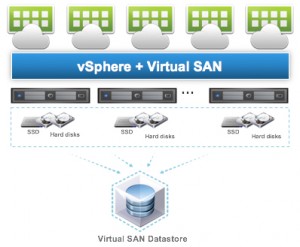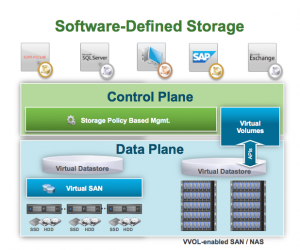 Out with the old and in with the new! In the spirit of simplicity for all things hardware related to Virtual SAN, today VMware released a newly revamped hardware compatibility guide portal.
Out with the old and in with the new! In the spirit of simplicity for all things hardware related to Virtual SAN, today VMware released a newly revamped hardware compatibility guide portal.
The portal introduces a new and simplified hardware searching capability that is primarily focused around Virtual SAN Ready Nodes instead of the previous approach focused on individual certified hardware components.
The new portal is designed to deliver a concise, quick, and rich user experience for customers. Now, customers that are looking to identify the latest and greatest suitable hardware options for their respective Virtual SAN use cases can do so with a minimum of six on-screen clicks.
Customers can very quickly select their Virtual SAN architecture of choice, supported release, preferred vendor, hardware generation, performance and storage capacity profile, and lastly server form factor type.
The new portal introduces a new Virtual SAN Ready Node profile branding series that replaces the previous low, medium, and high profile identification. The new profile branding series consist of five different profile across both supported Virtual SAN storage architectures hybrid and All-Flash. The image below illustrates the mapping of the new branding to the previously supported branding model of low, medium, high profiles.
The portal also provides the ability to dynamically generate PDF files that containing the configuration requirements that is inputed into the portal. This PDF can be generated to be utilized as a purchasing reference or to simply keep the record.
While the focus of the new portal points to all things Virtual SAN Ready Node, customers may still pursue building their own solutions with individual certified components.
For the most part it is strongly recommends to use certified Ready Nodes that are validated to provide predictable performance and scalability for your Virtual SAN deployment. If you would still like to build your own Virtual SAN with certified components, then click Build Your Own based on Certified Components.
The new VMware Compatibility Guide portal is the one-stop-shop location for all things related to Virtual SAN ranging from hardware, Virtual SAN Assessment Tool, Sizing and TCO calculator, and the new Virtual SAN Hardware Quick Reference Guide.
– Enjoy
For future updates on Virtual SAN (VSAN), vSphere Virtual Volumes (VVol) and other Storage and Availability technologies, as well as vSphere Integrated OpenStack (VIO), and Cloud-Native Apps (CNA) be sure to follow me on Twitter: @PunchingClouds











